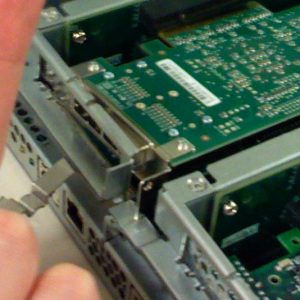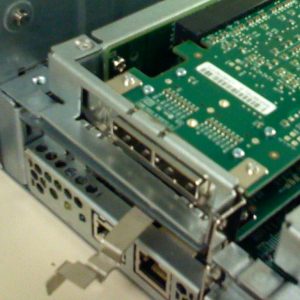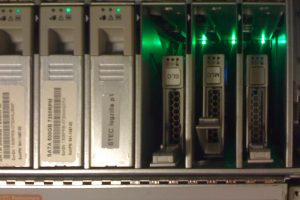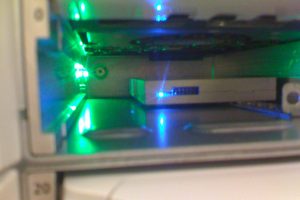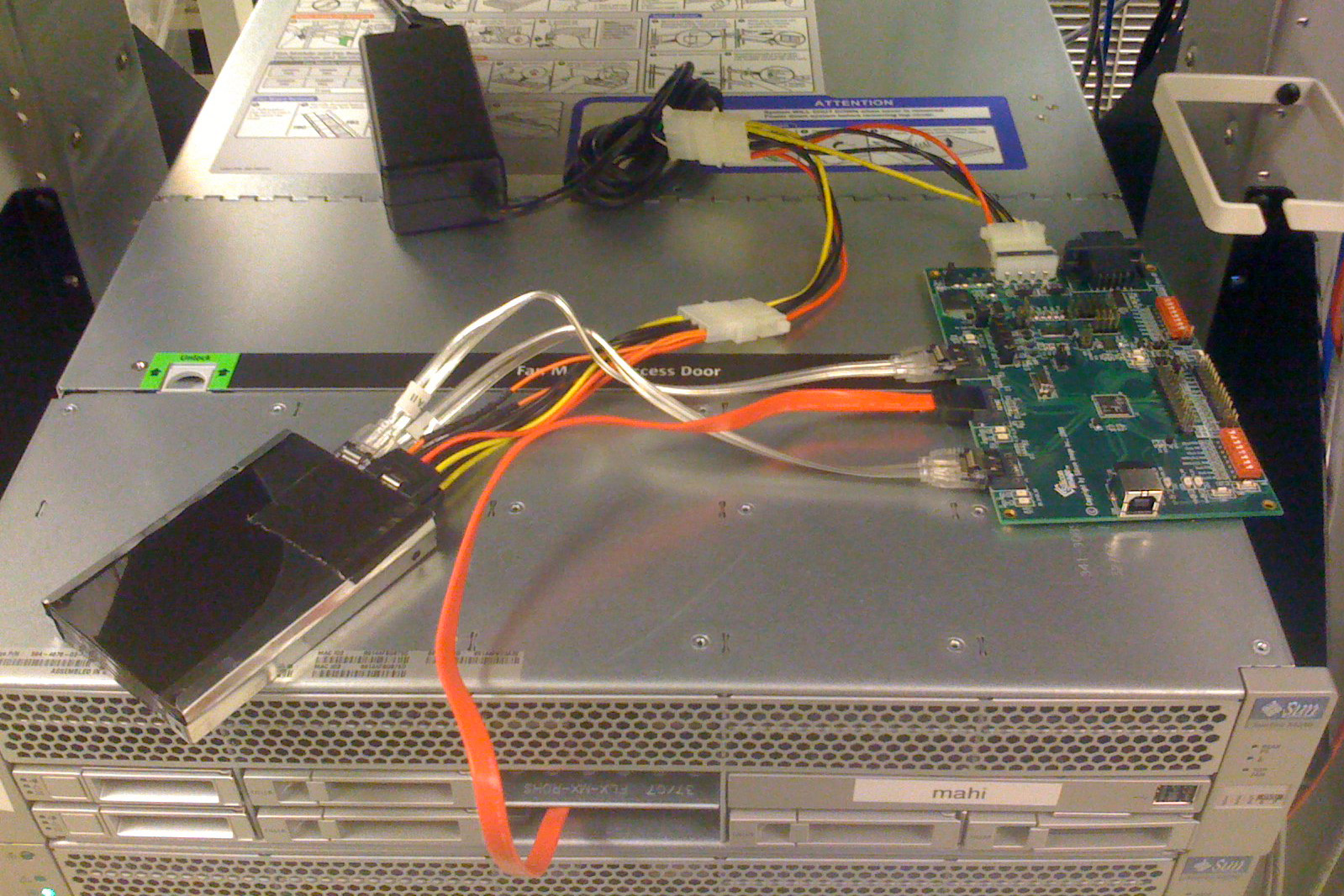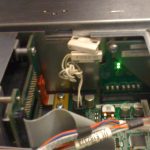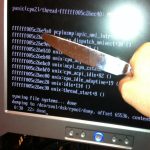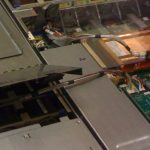A few months ago I took DTrace on OEL for a spin after Oracle announced it. The results were ugly; as one of the authors of DTrace, I admit to being shocked by shoddiness of the effort. Yesterday, Oracle dropped an updated beta so I wanted to see how far they’ve come in the 4+ months since that initial false start.
Whither the probes?
Back in October there were 574 functional probes (and 13 more that didn’t work). Here’s the quantitative state of DTrace for OEL today:
[root@screven drivers]# dtrace -l | wc -l 618
Okay. Steady improvement. By way of unfair comparison, here’s what it looks like on my Mac OS X laptop:
qadi /Users/ahl # dtrace -l | wc -l 578044
What’s new?
Back in October, I tried enabling all system call probes (i.e. all functional probes); the result was that ssh started failing mysteriously. It was a gross violation of the core principles — it would be unacceptable for DTrace to cause harm to the production systems on which it operates. Good to see that Oracle fixed it.
Previously, profile provider probes weren’t working. The profile probes have been removed — you can’t do arbitrary resolution timer-based profiling — but the simple, tick probes are there:
[root@screven drivers]# dtrace -l -n profile::: ID PROVIDER MODULE FUNCTION NAME 612 profile tick-1 613 profile tick-10 614 profile tick-100 615 profile tick-500 616 profile tick-1000 617 profile tick-5000
… and seem to work:
[root@screven ~]# dtrace -n 'tick-1{ printf("%Y", walltimestamp); }'
dtrace: description 'tick-1' matched 1 probe
CPU ID FUNCTION:NAME
0 612 :tick-1 2012 Feb 23 04:31:27
0 612 :tick-1 2012 Feb 23 04:31:28
0 612 :tick-1 2012 Feb 23 04:31:29
They’ve also added some inscrutable SDT (statically defined tracing) probes:
[root@screven ~]# dtrace -l -n sdt::: ID PROVIDER MODULE FUNCTION NAME 597 sdt vmlinux __handle_sysrq -handle_sysrq 601 sdt vmlinux oom_kill_process oom_kill_process 602 sdt vmlinux check_hung_task check_hung_task 603 sdt vmlinux sys_init_module init_module 604 sdt vmlinux sys_delete_module delete_module 611 sdt vmlinux signal_fault signal_fault
More usefully, the beta includes a partially implemented proc provider; the proc provider traces high level process activity (check the docs).
[root@screven ~]# dtrace -l -n proc::: ID PROVIDER MODULE FUNCTION NAME 598 proc vmlinux do_execve_common exec-success 599 proc vmlinux do_execve_common exec-failure 600 proc vmlinux do_execve_common exec 605 proc vmlinux get_signal_to_deliver signal-handle 606 proc vmlinux __send_signal signal-send 607 proc vmlinux do_exit exit 608 proc vmlinux do_exit lwp-exit 609 proc vmlinux do_fork create 610 proc vmlinux do_fork lwp-create
For reference, here’s what it looks like on DelphixOS, an illumos derivative (which of course includes DTrace):
root@argos:~# dtrace -l -n proc::: ID PROVIDER MODULE FUNCTION NAME 10589 proc unix lwp_rtt_initial lwp-start 10629 proc unix lwp_rtt_initial start 10631 proc unix trap fault 10761 proc genunix sigtimedwait signal-clear 10762 proc genunix psig signal-handle 10763 proc genunix sigtoproc signal-discard 10764 proc genunix sigtoproc signal-send 10831 proc genunix lwp_create lwp-create 10868 proc genunix cfork create 10870 proc genunix proc_exit exit 10871 proc genunix lwp_exit lwp-exit 10872 proc genunix proc_exit lwp-exit 10873 proc genunix exec_common exec-success 10874 proc genunix exec_common exec-failure 10875 proc genunix exec_common exec
Each DTrace probe has arguments that convey information about the activity that caused the probe to fire. For example, with the kernel function boundary tracing (fbt) provider (not yet implemented in OEL), the arguments for the function entry probe correspond to the arguments passed to the function. With static providers such as the proc provider, the parameters include useful information… but I can never seem to remember the types and order. Fortunately, DTrace lets you add in the -v option to get more information about a probe. Unfortunately, this hasn’t been hooked up in Oracle’s port (just an bug, I’m sure):
[root@screven ~]# dtrace -lv -n proc:::signal-send ID PROVIDER MODULE FUNCTION NAME 606 proc vmlinux __send_signal signal-send Probe Description Attributes Identifier Names: Private Data Semantics: Private Dependency Class: Unknown Argument Attributes Identifier Names: Evolving Data Semantics: Evolving Dependency Class: ISA Argument Types args[0]: (unknown) args[1]: (unknown) args[2]: (unknown) args[3]: (unknown) args[4]: (unknown) args[5]: (unknown) args[6]: (unknown) args[7]: (unknown) args[8]: (unknown) args[9]: (unknown) args[10]: (unknown) args[11]: (unknown) args[12]: (unknown) args[13]: (unknown) args[14]: (unknown) args[15]: (unknown) args[16]: (unknown) args[17]: (unknown) args[18]: (unknown) args[19]: (unknown) args[20]: (unknown) args[21]: (unknown) args[22]: (unknown) args[23]: (unknown) args[24]: (unknown) args[25]: (unknown) args[26]: (unknown) args[27]: (unknown) args[28]: (unknown) args[29]: (unknown) args[30]: (unknown) args[31]: (unknown)
Here’s what it looks like on DelphixOS:
root@argos:~# dtrace -lv -n proc:::signal-send
ID PROVIDER MODULE FUNCTION NAME
10764 proc genunix sigtoproc signal-send
Probe Description Attributes
Identifier Names: Private
Data Semantics: Private
Dependency Class: Unknown
Argument Attributes
Identifier Names: Evolving
Data Semantics: Evolving
Dependency Class: ISA
Argument Types
args[0]: lwpsinfo_t *
args[1]: psinfo_t *
args[2]: int
Even without the type system being hooked up, you can definitely do some useful work with this beta. For example, I can use the proc provider to look at what commands are executing on my system:
[root@screven ~]# dtrace -n proc:::exec'{ trace(stringof(arg0)); }'
dtrace: description 'proc:::exec' matched 1 probe
CPU ID FUNCTION:NAME
0 600 do_execve_common:exec /usr/bin/staprun
0 600 do_execve_common:exec /usr/sbin/perf
0 600 do_execve_common:exec /bin/uname
0 600 do_execve_common:exec /usr/libexec/perf.2.6.39-101.0.1.el6uek.x86_64
On his blog, Wim Coekaerts showed some examples of use of the proc provider that included this common idiom:
proc:::create
{
this->pid = *((int *)arg0 + 171);
...
It’s hard to know where that 171 constant came from or how a user would figure that out. I assume that this is because OEL doesn’t yet have proper types and it’s a hardcoded offset into some structure. Here’s what that would look like on completed DTrace implementations:
proc:::create
{
this->pid = args[0]->pr_pid;
...
Progress
There’s a long way to go, but it looks like the folks at Oracle are making progress. It will be interesting to see the source code that goes along with this updated beta — as of this writing, the git repository has not been updated. Personally, I’m eager to see what user-land tracing looks like in the form of the pid provider and USDT. In the tradition of other ports such as Apple’s and FreeBSD’s, I’d invite the Oracle team to present their work at the upcoming DTrace conference, dtrace.conf.

